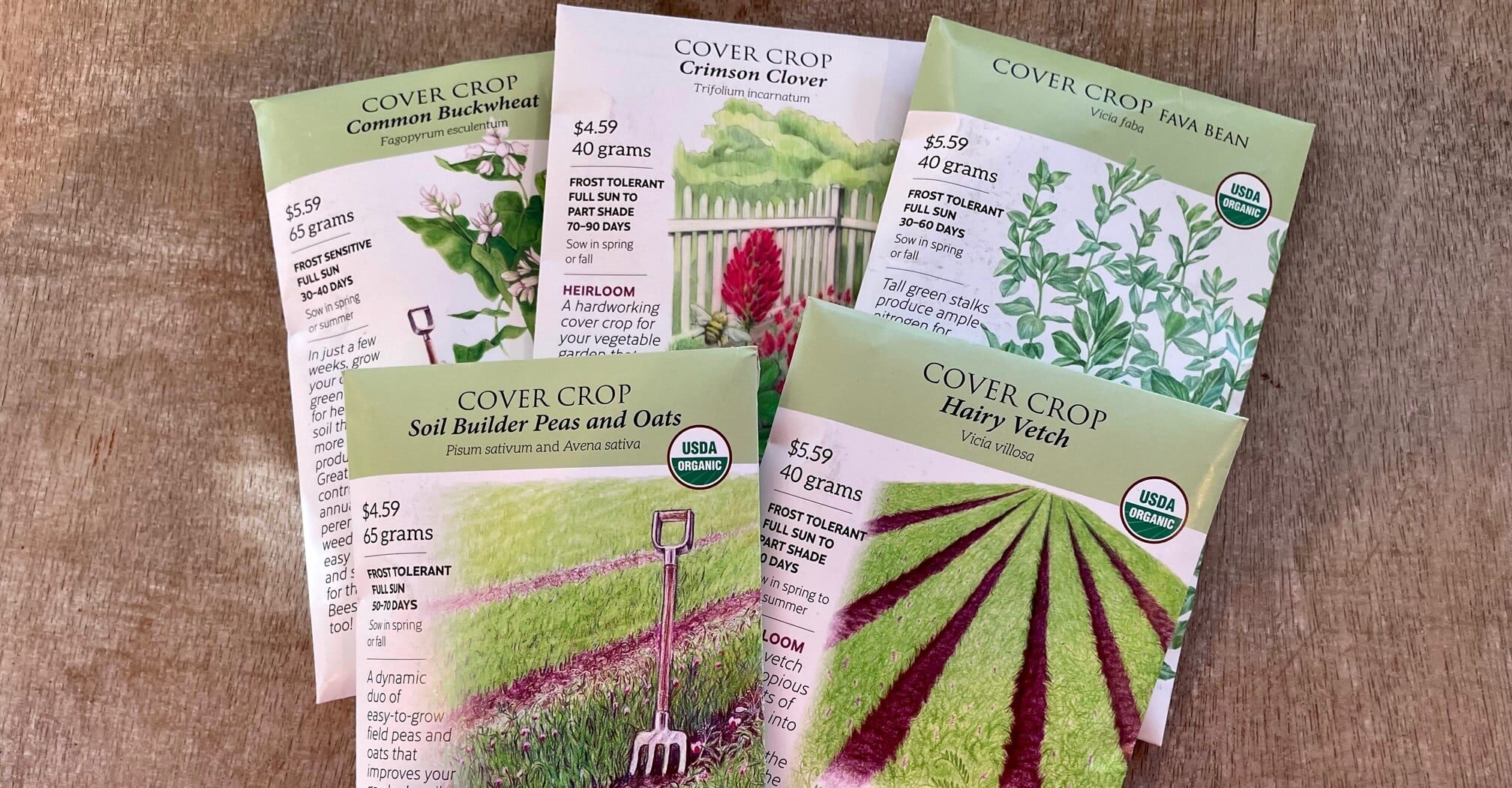Cover crops or “green manures” have gone hand in hand with agricultural practices for a long time. Cover crops naturally re-enrich soil, protect it from erosion due to rain or wind, improve its texture, and feed soil organisms, which maintain a healthy ecosystem in the soil, breaking down minerals and nutrients that feed plants. As gardeners, our success is directly tied to the soil in a very tangible way, but looking at the bigger picture, soil health impacts all its inhabitants and the greater environment.
Why Use Cover Crop Seeds
Our current cover crop selection gives options for spring, summer, and fall cover crop growing. Any of the cover crops you choose to grow do two things: as they grow, they provide heavy shade, suppressing weed germination and growth.; and as they decompose into the garden bed or your compost pile, they contribute organic material.
Specifically, peas (sow in spring or fall), fava beans (sow in spring or fall) or crimson clover (sow in spring or fall) fix nitrogen (draw in nitrogen and convert it to a form that plants can absorb), trapping it in their roots for the next plants to use. Nitrogen contributes to the green growth of plants and is the nutrient we need to add most often in the garden because it easily changes to a gas and moves about. Buckwheat is excellent at mining the soil for phosphorus, which contributes to root, flower, and fruit growth, making it accessible to plants as it decomposes.
When to Sow Cover Crop Seeds
Late in summer when sweet corn or other warm-season crops are done, sow fava or peas and oats in their place. A heavy frost will kill the peas and oats, but favas will keep going until it gets persistently cold (below 20°F). Let the dead vegetation stand until spring, shading the soil, which preserves moisture; the roots hold the soil in place and feed microorganisms over the winter.
In the spring, sow crimson clover under fruit trees to not only enrich the soil, but also to call in the pollinators, and, as a bonus, its strawberry-colored flowers are adorable and make great tea! In July, after harvesting garlic, sow buckwheat over the bed, chopping it down once when about a third of it is in flower, allowing it to regrow. Cut the buckwheat two or three times, letting the cut parts lie on the soil as a mulch, and turn them in later. The bonus here, is that the bees love buckwheat flowers!
Even use cover crops in newly created beds, giving them some nutrition and keeping the weeds at bay. A healthy soil is a soil covered in something living. With few exceptions, a bare patch of soil will quickly be covered with vegetation which nurtures and protects it. Gardening with cover crops is a way we can pick beneficial plants to cover that bare patch rather than allowing weeds to take up residence.
- information from Botanical Interests, Creek Side’s preferred seed supplier

